|
February
Important historic dates in science
February
28: Steven
Chu
(Born February 28,
1948)
American physicist who (with Claude Cohen-Tannoudji and William D. Phillips)
was awarded the 1997 Nobel Prize for Physics for their independent, pioneering
research in cooling and trapping atoms using laser light. In their normal
state the constant random thermal motion of atoms limits the precision
of measurements of atomic states. Thus, physicists have sought to cool
and slow atoms down as much as possible. Chu used six laser beams and
worked with a hot gas of sodium atoms. He managed to cool and trap atoms
in what he called "optical molasses." By 1985, he had cooled
sodium atoms to a temperature of about 240 millionth of a degree above
absolute zero. The atoms could be trapped in the laser beams for a period
of about half a second.
February
27: Neutron
In 1932, the neutron
was discovered by Dr. James Chadwick.
February
26: Radioactivity
In 1896, Henri Becquerel
stored a phosphorescent uranium compound in a closed desk drawer on top
of a photographic plate awaiting a sunnier day to test his idea that sunlight
would make the phosphorescent uranium emit rays. It remained there several
days. Thus by accident, he created a new experiment, for when he developed
the photographic plate, he found a fogged image in the shape of the rocks.
The material was spontaneously generating and emitting the energetic rays
totally without the external sunlight source. This was a landmark event.
The new form of penetrating radiation was the discovery of the effect
of radioactivity.
February
25: Ida
Noddack
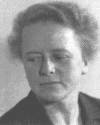 (Born February 25, 1896: Died 1979)
(Born February 25, 1896: Died 1979)
German chemist who co-discovered (1925) element 75, rhenium, which they
named after the Rhine River. They found trace amounts in the mineral columbite.
She was working with Walter Noddack, her future husband (1926). They were
also trying to find element 43, which they called masurium, but announcement
of that find was mistaken. She commented on the possibility of fission
upon hearing the reports of Fermi's 1934 observations of the neutron bombardment
of uranium. Her idea remained dormant. However, when Frisch, five years
afterwards, presented the same idea, it became accepted. In photochemistry,
the Noddacks worked on sensitizing coloring substances, the photochemistry
of the human eye and other subjects.
February
24: Uranium
In 1896, Henri Bequerel
told the French Academy of Sciences of his investigation of the phosphorescent
rays of some "double sulfate of uranium and potassium" crystals.
He reported that he placed the crystals on the outside of a photographic
plate wrapped in sheets of very thick black paper and exposed the whole
to the sun for several hours. When he developed the photographic plate,
he saw a black silhouette of the substance exposed on the negative. When
he placed a coin or metal screen between the uranium crystals and the
wrapped plate, he saw images of those objects on the negative. He does
not know yet that he has accidentally discovered radioactivity, or that
the sun is not necessary to initiate the rays.
February
23: Allan
MacLeod Cormack
(Born February 23,
1924: Died May 7, 1998)
South African-born American physicist who formulated the mathematical
algorithms that made possible the development of a powerful new diagnostic
technique, the cross-sectional X-ray imaging process known as computerized
axial tomography (CAT) scanning. He first described this in two papers
in 1963 and 1964. X-ray tomography is a process by which a picture of
an imaginary slice through an object (or the human body) is built up from
information from detectors rotating around the body. For this work, he
was awarded a share of the 1979 Nobel Prize. Cormack was unusual in the
field of Nobel laureates because he never earned a doctorate degree in
medicine or any other field of science.
February
22: First
English clinical radiology report
 In
1896, the first use of clinical radiology in England was reported in The
Lancet by Charles Thurstan Holland only a few months after Roentgen's
announcement of their properties. Holland had been in attendance on February
7, 1896 when the wrist of a 12-year-old boy, who had shot himself the
previous month, was examined in the laboratory of Oliver Lodge, head of
the physics department at Liverpool University. The boy had been brought
there by surgeon Sir Robert Jones when probing alone could not locate
the bullet. Using X-rays, the pellet was identified embedded in the third
carpo-metacarpal joint. Jones subsequently financed an X-ray apparatus
for Holland to pioneer radiology at Royal Southern Hospital, Liverpool.
[Image: X-ray from 1896 of hand with buckshot made at Columbia
University, USA] In
1896, the first use of clinical radiology in England was reported in The
Lancet by Charles Thurstan Holland only a few months after Roentgen's
announcement of their properties. Holland had been in attendance on February
7, 1896 when the wrist of a 12-year-old boy, who had shot himself the
previous month, was examined in the laboratory of Oliver Lodge, head of
the physics department at Liverpool University. The boy had been brought
there by surgeon Sir Robert Jones when probing alone could not locate
the bullet. Using X-rays, the pellet was identified embedded in the third
carpo-metacarpal joint. Jones subsequently financed an X-ray apparatus
for Holland to pioneer radiology at Royal Southern Hospital, Liverpool.
[Image: X-ray from 1896 of hand with buckshot made at Columbia
University, USA]
February
21: George
Ellery Hale
(Born June 29, 1868:
Died February 21, 1938)
American astronomer known for his development of important astronomical
instruments. To expand solar observations and promote astrophysical studies
he founded Mt. Wilson Observatory (Dec 1904). He discovered that sunspots
were regions of relatively low temperatures and high magnetic fields.
Hale hired Harlow Shapley and Edwin Hubble as soon as they finished their
doctorates, and he encouraged research in galactic and extragalactic astronomy
as well as solar and stellar astrophysics. Hale planned and tirelessly
raised funds for the 200" reflecting telescope at the Palomar Mountain
Observatory completed in 1948, after his death, and named for him - the
Hale telescope.
February
20: Maric
Goeppert Mayer
(Born June 28, 1906:
Died February 20, 1972:
German physicist who shared one-half of the 1963 Nobel Prize for Physics
with J. Hans D. Jensen of West Germany for their proposal of the shell
nuclear model. (The other half of the prize was awarded to Eugene P. Wigner
of the United States for unrelated work.) In 1939 she worked at Columbia
University on the separation of uranium isotopes for the atomic bomb project.
In 1949, she devised the shell nuclear model, which explained the detailed
properties of atomic nuclei in terms of a structure of shells occupied
by the protons and neutrons. This explained the great stability and abundance
of nuclei that have a particular number of neutrons (such as 50, 82, or
126) and the same special number of protons.
February
19: Nicolaus
Copernicus
(Born February 19,
1473: Died May 24, 1543)
Polish astronomer who proposed that the planets have the Sun as the fixed
point to which their motions are to be referred; that the Earth is a planet
which, besides orbiting the Sun annually, also turns once daily on its
own axis; and that very slow, long-term changes in the direction of this
axis account for the precession of the equinoxes.
February
18: J.
Robert Oppenheimer
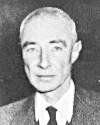 (Born
April 22, 1904: Died February 18, 1967) (Born
April 22, 1904: Died February 18, 1967)
Julius Robert Oppenheimer was a U.S. theoretical physicist and science
administrator, noted as director of the Los Alamos laboratory during development
of the atomic bomb (1943-45) and as director of the Institute for Advanced
Study, Princeton (1947-66). Accusations as to his loyalty and reliability
as a security risk led to a government hearing that resulted the loss
of his security clearance and of his position as adviser to the highest
echelons of the U.S. government. The case became a cause célèbre
in the world of science because of its implications concerning political
and moral issues relating to the role of scientists in government.
February
17: British
atomic bomb announced
In 1952, Winston Churchill
announced that Britain had developed its own atomic bomb. The test for
the first British-made atomic bomb was planned at the Monte Bello Islands
off the northwest coast of Australia. The formal postwar decision to manufacture
a British atomic bomb had been made by Prime Minister Clement Attlee's
government early in January, 1947 during a meeting of the Defence Subcommittee
of the Cabinet. On February 25, 1952 at Sellafield on the Irish Sea coast
in Cumberland, the Windscale plutonium plant began operation. On October
3, 1952 the first British atomic weapons test, called Hurricane, was successfully
conducted aboard the frigate HMS Plym. Britain was was the third nuclear
power after the U.S. and Russia to include the atomic bomb in its armoury.
February
16: Nuclear
tests
1977 - USSR performs nuclear test at Sary Shagan USSR
1966 - France performs underground nuclear test at Ecker, Algeria
February
15: Herman
Kahn
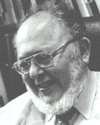 (Born
February 15, 1922: Died July 7, 1983) (Born
February 15, 1922: Died July 7, 1983)
American physicist, military analyst (1948-61) and futurist best known
for his controversial studies of nuclear warfare. Kahn won recognition
for his dispassionate analysis of nuclear war in his books On Thermonuclear
War (1960) which still, in its detached analysis of various nuclear-war
scenarios, retains the power to shock.and Thinking About the Unthinkable
(1962) which predicted the probability and survivability of nuclear war.
Later books included the optimistic The Year 2000 (1967) and Why ABM?
(1969). In 1961 he founded the influential Hudson Institute in New York
to make reasoned predictions on world affairs, from narcotics policy to
global economics, energy, international trade, population, transportation,
crime, medicine.
February
14: Walter
Henry Zinn
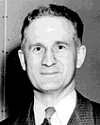 (Born
December 10, 1906: Died February 14, 2000) (Born
December 10, 1906: Died February 14, 2000)
Canadian-American nuclear physicist who contributed to the U.S. atomic
bomb project during World War II and to the development of the nuclear
reactor. He collaborated with Leo Szilard, investigating atomic fission.
In 1939, they demonstrated that uranium underwent fission when bombarded
with neutrons and that part of the mass was converted into energy (given
by E = mc2). This work led him into research into the construction of
the atomic bomb during WW II. After the war Zinn started the design of
an atomic reactor and, in 1951, he built the first breeder reactor. In
a breeder reactor, the core is surrounded by a "blanket" of
uranium-238 and neutrons from the core convert this into plutonium-239,
which can also be used as a fission fuel.
February
13: French
atomic bomb
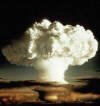 In
1960, France detonated their first plutonium bomb from a 330-foot tower
at the Reggane base in the Sahara in what was then French Algeria. On
October 18, 1945, the Atomic Energy Commission (Commissariat à
l'Énergie Atomique; CEA) had been established by General Charles
de Gaulle with the objective of exploiting the scientific, industrial,
and military potential of atomic energy. On July 22, 1958, de Gaulle,
having resumed power as prime minister, had set the date for the first
atomic explosion to occur within the first three months of 1960. His goal
was to assert France's independence and its role on the world stage. Thus
he set about building the country's nuclear capacity acquiring also nuclear-armed
aircraft, missiles and submarines. In
1960, France detonated their first plutonium bomb from a 330-foot tower
at the Reggane base in the Sahara in what was then French Algeria. On
October 18, 1945, the Atomic Energy Commission (Commissariat à
l'Énergie Atomique; CEA) had been established by General Charles
de Gaulle with the objective of exploiting the scientific, industrial,
and military potential of atomic energy. On July 22, 1958, de Gaulle,
having resumed power as prime minister, had set the date for the first
atomic explosion to occur within the first three months of 1960. His goal
was to assert France's independence and its role on the world stage. Thus
he set about building the country's nuclear capacity acquiring also nuclear-armed
aircraft, missiles and submarines.
February
12: Pierre-Louis
Dulong
(Born February 12,
1785: Died July 18, 1838)
chemist and physicist who helped formulate the Dulong-Petit law of specific
heats (1819), which proved useful in determining atomic weights.
February
11: Atomic
fission
In
1939, the journal Nature published a theoretical paper on nuclear fission.
The term was coined by the authors Lise Meitner and Otto Fritsch, her
nephew. They knew that when a uranium nucleus was struck by neutrons,
barium was produced. Seeking an explanation, they used Bohr's "liquid
drop" model of the nucleus to envision the neutron inducing oscillations
in a uranium nucleus, which would occasionally stretch out into the shape
of a dumbbell. Sometimes, the repulsive forces between the protons in
the two bulbous ends would cause the narrow waist joining them to pinch
off and leave two nuclei where before there had been one. They calculated
calculated the huge amounts of energy released. This was the basis for
nuclear chain reaction.
February
10: Wilhelm
Conrad Röntgen
(Born May 27, 1845:
Died February 10, 1923)
(also spelled Roentgen) German physicist who was a recipient of the first
Nobel Prize for Physics, in 1901, for his discovery of X rays, which heralded
the age of modern physics and revolutionized diagnostic medicine.
February
9: Japanese
nuclear accident
In 1991, Japan's worst
nuclear accident happened at Mihama. A pipe in the steam generator burst,
leaking 55 tonnes of radioactive primary (reactor) coolant water into
the secondary steam-generating circuit. Some radioactivity was released
to the atmosphere and the plant's emergency core cooling system was activated.
MITI reported later that the accident was caused by human error, some
anti-vibration bars being wrongly installed by workers and sawn off short
to make them fit. The release of radiation into the atmosphere was kept
to a small amount. No deaths resulted. Various measures were taken to
prevent the recurrence of the accident, including the replacement of the
steam generators.
February
8: Walther
Bothe
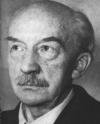 (Born
January 8, 1891: Died February 8, 1957) (Born
January 8, 1891: Died February 8, 1957)
Walther Wilhelm Georg Bothe was a German physicist who developed the coincidence
method of detecting the emission of electrons by x-rays in which electrons
passing through two adjacent Geiger tubes at almost the same time are
registered as a coincidental event. He used it to show that momentum and
energy are conserved at the atomic level. In 1929 he applied the method
to the study of cosmic rays and was able to show that they consisted of
massive particles rather than photons. This research brought him a share
(with Max Born) in the Nobel Prize for 1954. In 1930, he observed a strange
radiation emitted from beryllium when it was exposed to alpha particles,
later identified by Chadwick as consisting of neutrons. He built Germany's
first cyclotron (1943).
February
7: Igor Vasilyevich
Kurchatov
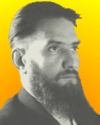 (Born
January 12, 1903: February 7, 1960) (Born
January 12, 1903: February 7, 1960)
Soviet nuclear physicist who was appointed director of nuclear physics
at the Leningrad Institute in 1938, then guided the development of his
country's first atomic bomb (1949), the world's first practical thermonuclear
bomb (1952), and the first atomic electric-power station in the Soviet
Union (1946). Before 1978, element-104 was known in the Soviet Union as
kurchatovium (Ku). The American claimants to the discovery named it rutherfordium
(Rf), which is now the accepted name.
February
6: Edward
Emerson Barnard
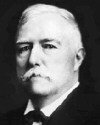 (Born December 16, 1857: Died February 6, 1923)
(Born December 16, 1857: Died February 6, 1923)
Astronomer who pioneered in celestial photography, specializing in wide-field
photography. From the time he began observing in 1881, his skill and keen
eyesight combined to make him one of the greatest observers. Barnard came
to prominence as an astronomer through the discovery of numerous comets.
In the 1880s, a patron of astronomy in Rochester, N.Y. awarded $200 per
new comet was found. Barnard discovered eight - enough to build a "comet
house" for his bride. At Lick Observatory (1888-95) he made the first
photographic discovery of a comet; photographed the Milky Way; and discovered
the fifth moon of Jupiter. Then he joined Yerkes Observatory, making his
Photographic Atlas of Selected Regions of the Milky Way.
February
5: Robert
Hofstadter
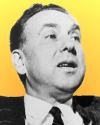 (Born
February 5, 1915: Died November 17, 1990) (Born
February 5, 1915: Died November 17, 1990)
American scientist who was a joint recipient of the Nobel Prize for Physics
in 1961 for his investigations in which he measured the size of the neutron
and proton in the nuclei of atoms. He revealed the hitherto unknown structure
of these particles and helped create an identifying order for subatomic
particles. He also correctly predicted the existence of hte omega-meson
and rho-meson. He also studied controlled nuclear fission. Hofstadter
was one of the driving forces behind the creation of the Stanford Linear
Accelerator. He also made substantial contributions to gamma ray spectroscopy,
leading to the use of radioactive tracers to locate tumors and other disorders.
(He shared the prize with Rudolf Ludwig Mössbauer of Germany.)
February
4: Satyendra
Nath Bose
 (Born January 1, 1894: Died February 4, 1974)
(Born January 1, 1894: Died February 4, 1974)
Indian mathematician and physicist who collaborated with Albert Einstein
to develop a theory of statistical quantum mechanics, now called Bose-Einstein
statistics. In his early work in quantum theory (1924), Bose had derived
the Planck black-body radiation law, without reference to classical electrodynamics.
Einstein extended this technique to integral spin particles. Dirac coined
the name boson for particles obeying these statistics. Bose also worked
on X-ray diffraction and the interaction of electromagnetic waves with
the ionosphere.
February
3: Paul Scherrer
(Born February 3,
1890: Died September 25, 1969)
Swiss physicist who collaborated with Peter Debye in the development of
a method of X-ray diffraction analysis. The Debye-Scherrer method is widely
used to identify materials that do not readily form large, perfect crystals.
February
2: Nuclear
test
The United States
performs nuclear test at Nevada Test Site, in 1951.
February
1: Atomic
bomb explosion and Moving X-Ray pictures
In
1951, the TV station KTLA broadcast of an atomic explosion was the first
to be seen publicly on television. The event was captured by an NBC camera
on Mount Wilson, 300 miles away from the test blast at Frenchman Flats,
Nevada. Also, In 1951, the first X-ray moving picture process was demonstrated.
Click
here to see previous months:
January
Photos courtsey of
Today in Science
|

